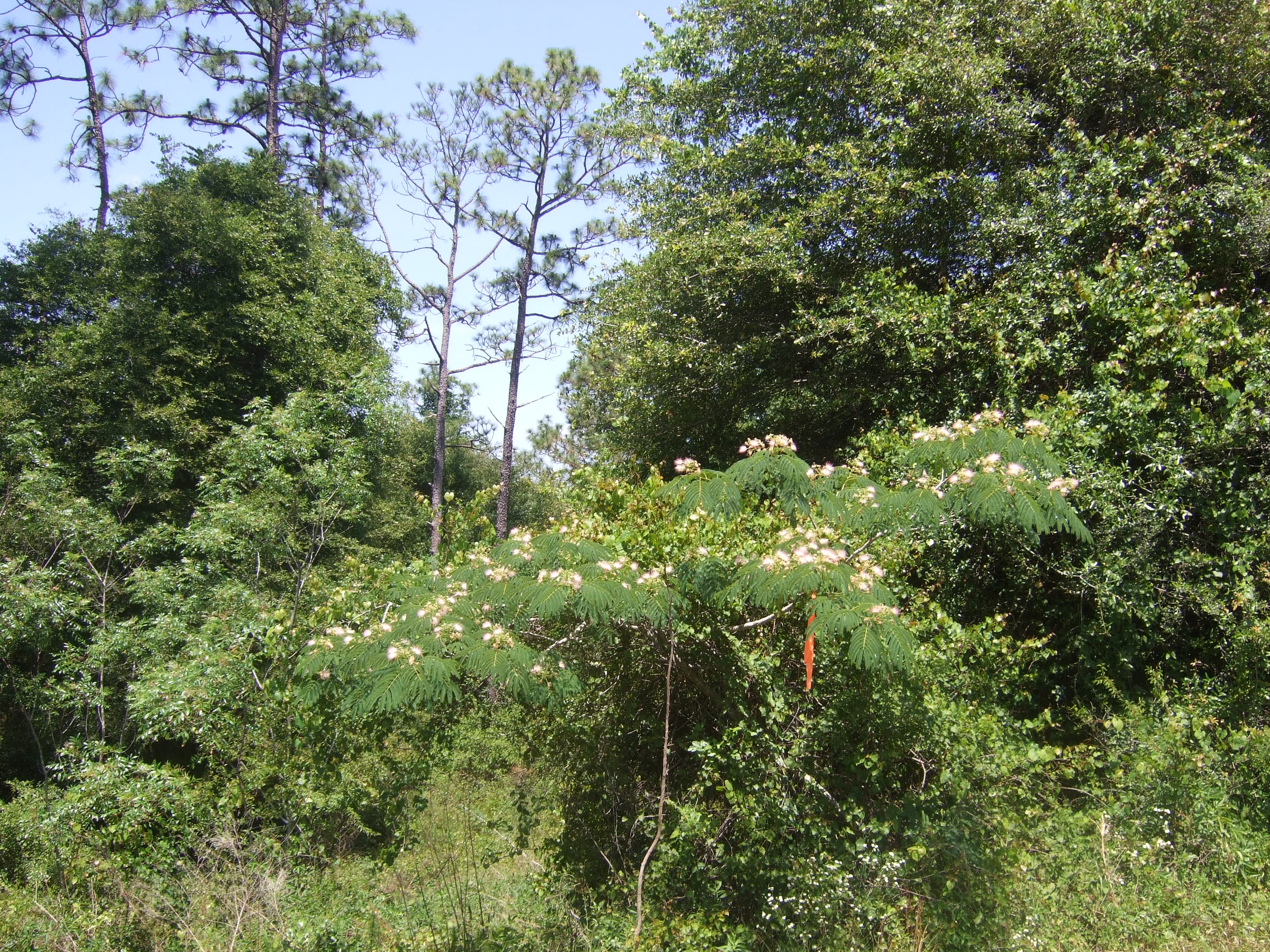Albizia julibrissin


Common Name: mimosa
Family: Fabaceae
Common Synonyms: none
USDA Hardiness Zone: 6a-10b
Growth Habit: Tree
Origin: China
FISC Category: 1
FDACS Listed Noxious Weed: No
Introduction Date: 1745
IFAS Assessment:

Deciduous tree to 12 m high. Older stems have light brown, smooth bark and younger stems are bright green. Twice compound alternate leaves with 20 to 60 leaflets. Flowers similar to woman's tongue (Albizia lebbeck) flowers, but differ in being pink in color and are fragrant. Flowers occur in clusters at the tips of stems. Forms linear bean like seedpods up to 15 cm long with 5 to 10 dark brown seeds.
Agricultural areas, coastland, natural forests, planted forests, ruderal/disturbed, scrub/shrublands, urban areas
Grows in variety of soils, resprouts easily when cut, and produces large amounts of seeds. Seeds can transport by water

NA
IFAS, Center for Aquatic and Invasive Plants. 2017. Albizia julibrissin. http://plants.ifas.ufl.edu/plant-directory/albizia-julibrissin/. Accessed September 18, 2017.
IFAS, UF, Assessment of Non-Native Plants in Florida's Natural Areas. 2017. Albizia julibrissin. https://assessment.ifas.ufl.edu/assessments/albizia-julibrissiNAccessed September 18, 2017.
Dave's Garden. 2017. PlantFiles: mimosa (Albzia julibrissin). http://davesgarden.com/guides/pf/go/1764/Accessed September 18, 2017.
